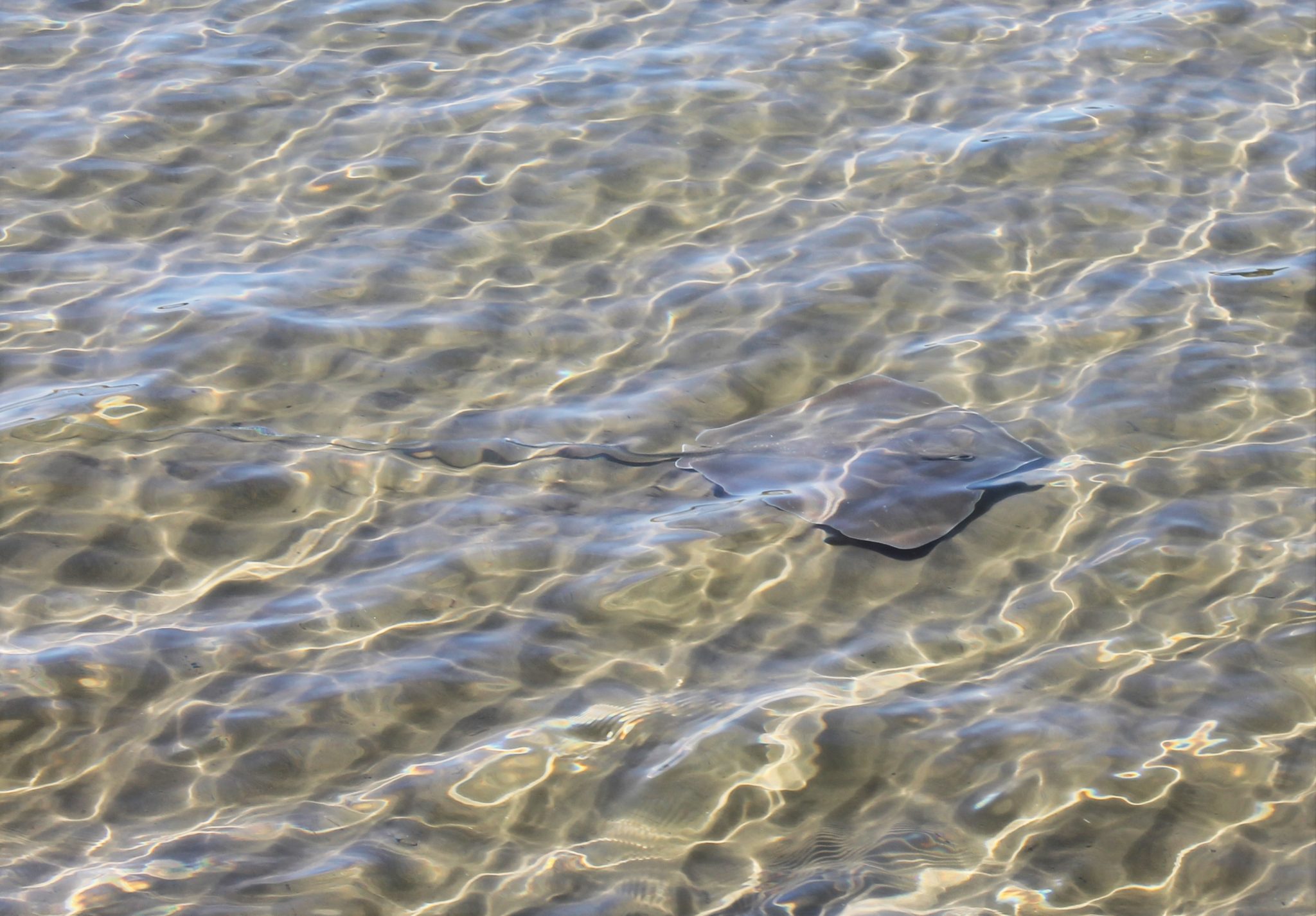12 Jan Stingray Alley

Stingray Alley
It’s not until you jump on board a LARC! Tour that you realise how many stingrays call 1770 home. During low tide you can see hundreds of holes that they have dug through the sand bar, then during high tide or while crossing the estuaries you can find our flat friends searching for their next meal. They are truly fascinating creatures, here’s 5 things you may not know about them.
1 – They are not out to get you!
Stingrays are quite timid. Actually they are way more scared of you than you are of them. So if you are swimming out from 1770 and touching the bottom, if you scuff your feet through the sand, any stingrays around will race away from you as fast as they can. The only time they will actively try to ‘sting’ you is if you surround them and don’t allow them an escape route or if you attack them first.
2 – Their closest relative is the shark
Yep, that’s right. Looks can be deceiving but sharks and rays are very closely related. Let’s get technical … Both are elasmobranchs, a subclass of fishes with cartilaginous skeletons, five to seven gill slits, electroreceptors and curious scales called dermal denticles. It’s not until you get to see a Shovelnose ray, that you really understand their relation.
3 – Two ways of breathing
Generally stingrays breath by pulling water through their mouth and out their gills, both of which are located on the underside of the body. However this is not possible while the animal is hunting, instead they utilise their spiracles. Spiracles are holes which sit behind their eyes which can draw sediment free water through them and then out through the gills. Using spiracles is less efficient than their mouth but an awesome talent none the less.
4 – Cultural Uses
Many different cultures have found peculiar uses for stingrays. The Japanese favour the skin of stingrays to use on samurai sword handles as grip due to it’s sandpaper like texture. Artifacts of early Indigenous Australians have found stingray barbs used as point ends on spears. The most fascinating would have to be the Ancient Greeks using stingray venom for anaesthetic in dentistry (curious to know how they figured this one?)
5 – In Decline
Despite seeing plenty of rays with 1770 LARC! Tours, sadly, stingray populations are in decline. Overfishing, habitat loss and climate change are the major threats to rays. Of the 539 species of rays assessed by the IUCN, 107 species are categorised as threatened.
Let’s go check them out
We hope you ray-lly enjoyed this information. The best times to spot rays with us is in the afternoon on a high tide at our favourite place – Stingray Alley. Please call our team on 07 4974 9422 to discuss tide and tour times. We hope to see you soon.

No Comments